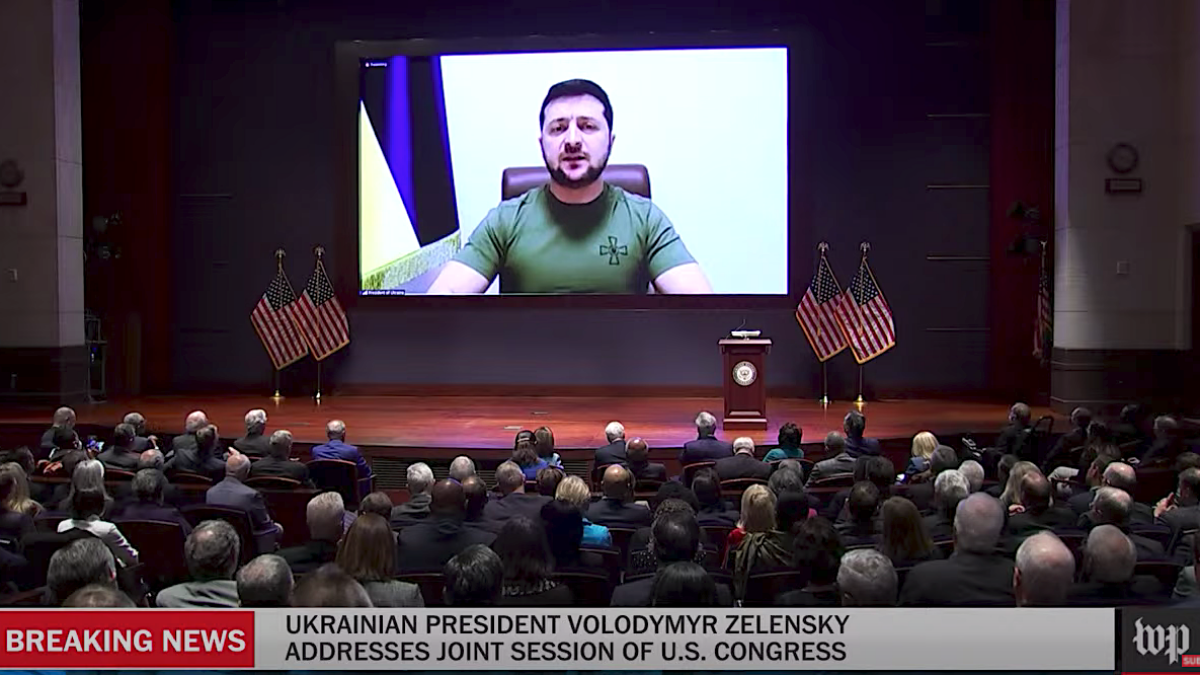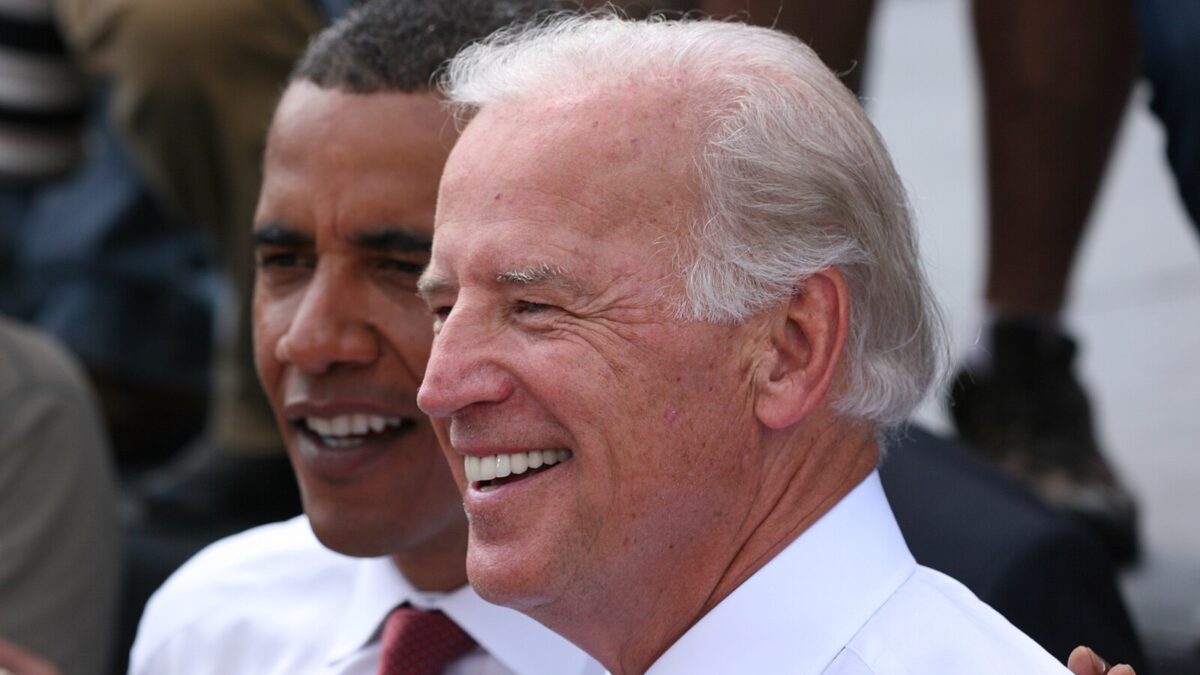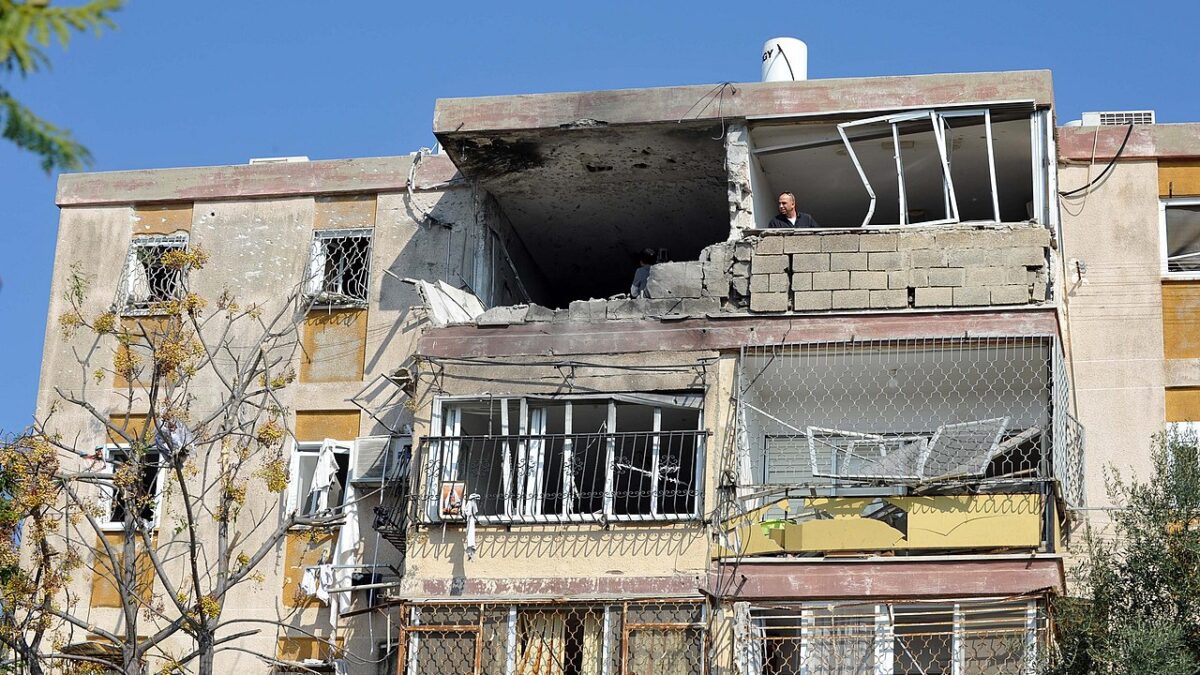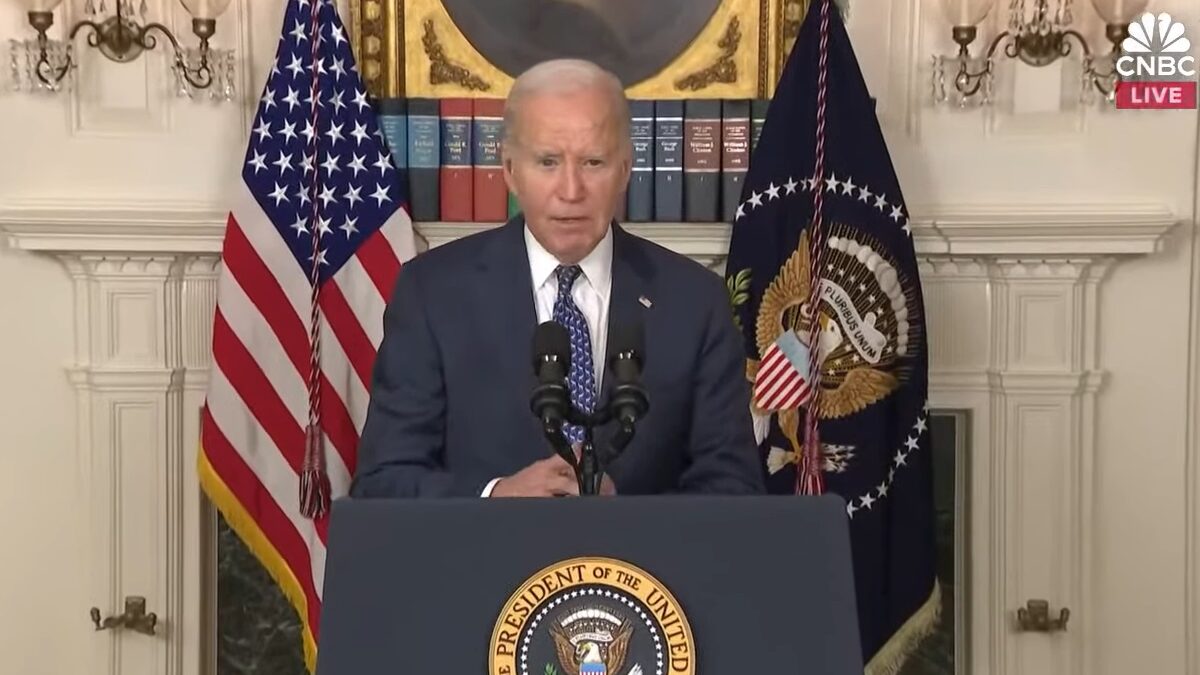The day after Ukrainian President Volodomyr Zelensky addressed Congress, the American press was understandably filled with paeans to his courage and leadership, his clarity of purpose and firm resolve in the face of mortal danger. As Bari Weiss noted in a thoughtful response to the speech, Zelensky knows what he’s fighting for, and he stands as an inspiring counterexample of things we hope for in our own political leaders, but do not have.
But there is something else behind this celebration of Zelensky. His speech, after all, was a rather straightforward request for the United States and our North Atlantic Treaty Organization allies to intervene on behalf of Ukraine. “In the darkest time for our country, for the whole of Europe, I call on you to do more,” he said, invoking Pearl Harbor, 9/11, and Martin Luther King, Jr.
He backed off, a little, from his repeated pleas for NATO to impose a no-fly zone over Ukraine, and instead pressed for fighter jets and long-range surface-to-air missile systems — military aid of a kind that would be unprecedented, and would arguably bring the United States and NATO right up to and possibly over the line of belligerence.
Zelensky can’t really be faulted for wanting to draw the West into this war. He is trying to save his people, who are in desperate straits. But our leaders have a responsibility not to be pulled into the conflict, however unpopular that might be in the current media environment.
Instead, we’re seeing just the opposite: the emergence of a bipartisan, establishment consensus in Washington that the United States and NATO must ratchet up military aid to Ukraine, right now, without even trying to articulate an overarching strategy, what the off-ramps might be, or what an end-state to the conflict might look like.
On the same day as Zelensky’s speech, President Biden announced a new round of $800 million in antiaircraft weapons and other military equipment for Ukraine. That’s a small slice of the $14 billion in security aid to Ukraine that Congress recently passed as part of a massive spending bill. In a moment of rare bipartisanship, Congress is taking action. This is the bipartisan consensus at work. Sen. Ben Sasse, R-Neb., channeling the consensus, wants to send more of everything. “If it shoots, we should ship it,” he said.
Democratic House Majority Leader Steny Hoyer, D-Md., went a bit further on Thursday. During a rules committee hearing he blurted out, “We’re at war,” while talking about the need for a unified U.S. response to the conflict. Then, perhaps realizing his slip, quickly clarified that we’re not physically on the battlefield with the Ukrainians, “But we ought to do everything we possibly can to make sure they can meet this enemy and defeat this enemy.”
These lawmakers take the view that we can dance along a line of belligerence without actually becoming belligerents in the war, as if we alone get to decide where that line is and when we have or have not crossed it. They, along with their cheerleaders in the corporate press, offer no substantive arguments about why we won’t get drawn into the war. They simply declare that we have to do more, that we can’t be afraid of Moscow, without even attempting to persuade a skeptical American public that the risk inherent to doing more — getting into a shooting war with Russia — is worth it. They don’t even acknowledge the risk.
They need to. This isn’t a conflict between Saudi Arabia and Iranian proxies in Yemen, or a civil war in Ethiopia. Russia is a nuclear power. It has tactical nuclear weapons that can be deployed on the battlefield. Its battlefield doctrine leaves room for their use. If western politicians are worried about what might happen if Russia wins, they need to consider what might happen if Russia starts losing, what Russian President Vladimir Putin might do if he thinks his war aims are slipping out of reach or that his regime is in danger.
That’s not to counsel appeasement, or to countenance Putin’s horrific bombardment of Ukrainian civilians. We can denounce Russian barbarism, and even continue aiding the Ukrainians, while maintaining a clear-eyed understanding of what’s possible in Ukraine, what’s not possible, and what the risks of escalation are for the United States and NATO.
Ukraine has fought valiantly, its people have done more to stymie the Russian invasion than anyone thought possible. The Ukrainians have paid a dear price for doing so, and as the war drags on, they will keep paying.
Western leaders can laude the courage of Zelensky and his people, but they also need to be honest with them. Washington should not assume that Putin will simply walk away from this war, or that he will accept a gradual defeat through the provision of NATO weapons and military aid to Ukraine. The assumption should be just the opposite: that Putin will widen the war if he thinks he’s losing it.
Seen that light, The United States is pursuing the most dangerous possible path right now by conveying confusion and irresoluteness to both Ukraine and Russia: devastating sanctions for Moscow but with no off-ramps or conditions for ending them; arms for Ukraine but not the kind or quantity that would turn the tide of war; contradictions and lack of coordination among the NATO allies, playing out in public for all the world to see.
This weak and desultory response to the war is partly why the United States is now marching mindlessly toward escalation, even if it’s not what President Biden intends. In many ways, Biden is being led by the nose. Top lawmakers in both parties, along with much of the corporate press, are talking themselves into going to war, and Biden is being carried along.
Even over the past 48 hours, there’s been a shift. The talk in Washington is no longer about sanctions on Russia or making Putin pay a price for Moscow’s aggression, but about how best to escalate our involvement and ensure a total and humiliating defeat of Russia, as if that’s a realistic end-state to this conflict.
But with apologies to Secretary of State Anthony Blinken, this war isn’t going to end with Russia’s total defeat and complete withdrawal from Ukraine, or with Ukraine retaining its full independence and territorial integrity. It will not end with regime change in Moscow and Putin hauled before the Hague on war crimes charges. That is a fantasy.
Right now we need our leaders to be realistic, which means recognizing that at this point there really are only two courses of action available to the United States: we can urge Ukrainian leaders to negotiate and agree to some version of Moscow’s terms to end the war, as Israel has been trying to do, or we can continue down a slippery slope that eventually leads to war with Russia.
Without any deliberation or reflection, Washington is choosing the latter.









